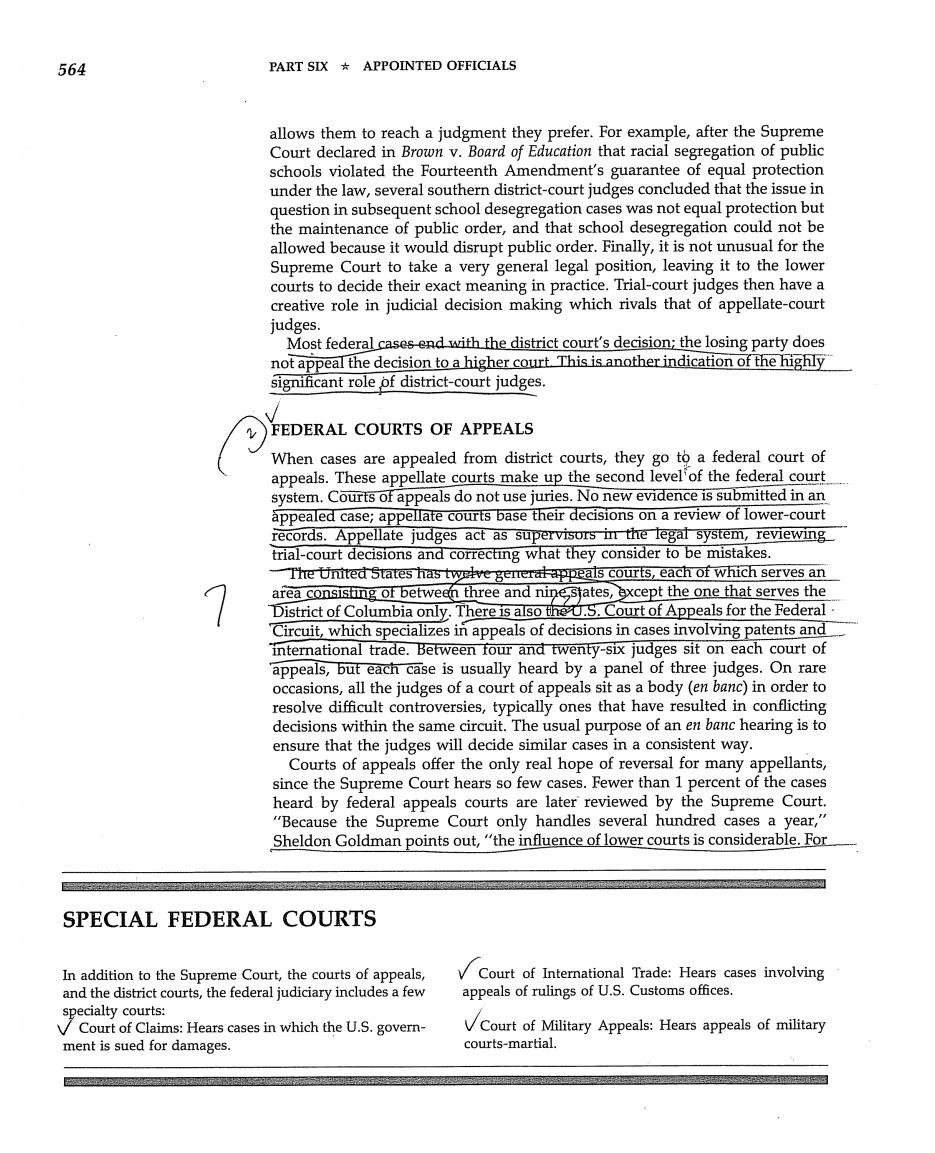正在加载图片...

564 PART SIX APPOINTED OFFICIALS allows them to reach a judgment they prefer.For example,after the Supreme Court declared in Brown v.Board of Education that racial segregation of public schools violated the Fourteenth Amendment's guarantee of equal protection under the law,several southern district-court judges concluded that the issue in question in subsequent school desegregation cases was not equal protection but the maintenance of public order,and that school desegregation could not be allowed because it would disrupt public order.Finally,it is not unusual for the Supreme Court to take a very general legal position,leaving it to the lower courts to decide their exact meaning in practice.Trial-court judges then have a creative role in judicial decision making which rivals that of appellate-court judges. Most federal cases end with the district court's decision;the losing party does not appeal the decision to a higher court.This is another indication of the highly significant role of district-court judges. FEDERAL COURTS OF APPEALS When cases are appealed from district courts,they go to a federal court of appeals.These appellate courts make up the second levelof the federal court system.Courts of appeals do not use juries.No new evidence is submitted in an appealed case;appellate courts base their decisions on a review of lower-court records.Appellate judges act as supervisors in the legal system,reviewing trial-court decisions and correcting what they consider to be mistakes. The United States has twelve general appeals courts,each of which serves an area consisting of between three and nine states,except the one that serves the District of Columbia only.There is also the U.S.Court of Appeals for the Federal. Circuit,which specializes in appeals of decisions in cases involving patents and international trade.Between four and twenty-six judges sit on each court of appeals,but each case is usually heard by a panel of three judges.On rare occasions,all the judges of a court of appeals sit as a body(en banc)in order to resolve difficult controversies,typically ones that have resulted in conflicting decisions within the same circuit.The usual purpose of an en banc hearing is to ensure that the judges will decide similar cases in a consistent way. Courts of appeals offer the only real hope of reversal for many appellants, since the Supreme Court hears so few cases.Fewer than 1 percent of the cases heard by federal appeals courts are later reviewed by the Supreme Court. Because the Supreme Court only handles several hundred cases a year," Sheldon Goldman points out,"the influence of lower courts is considerable.For SPECIAL FEDERAL COURTS In addition to the Supreme Court,the courts of appeals, V Court of International Trade:Hears cases involving and the district courts,the federal judiciary includes a few appeals of rulings of U.S.Customs offices. specialty courts: V Court of Claims:Hears cases in which the U.S.govern- VCourt of Military Appeals:Hears appeals of military ment is sued for damages. courts-martial